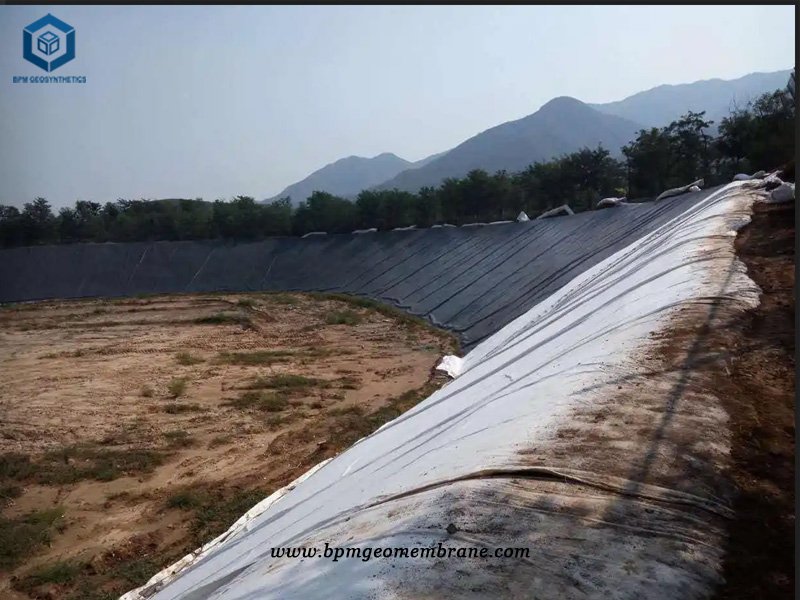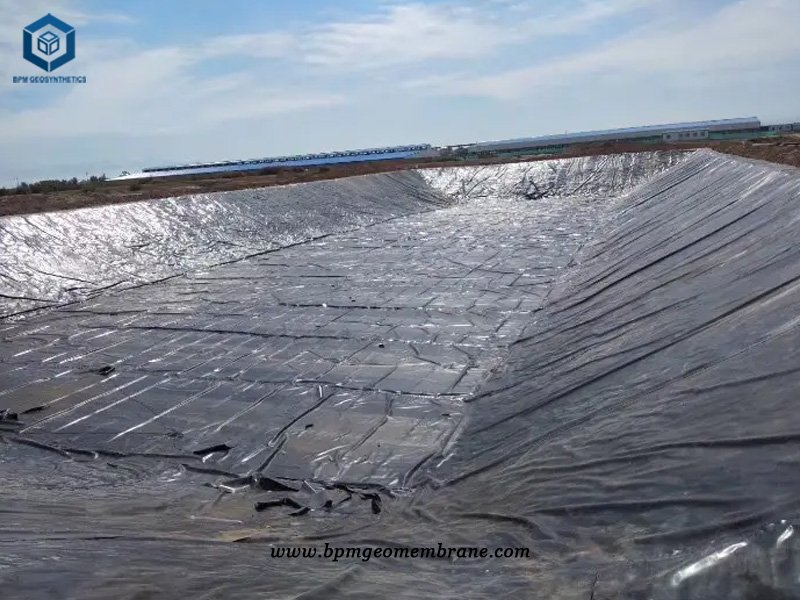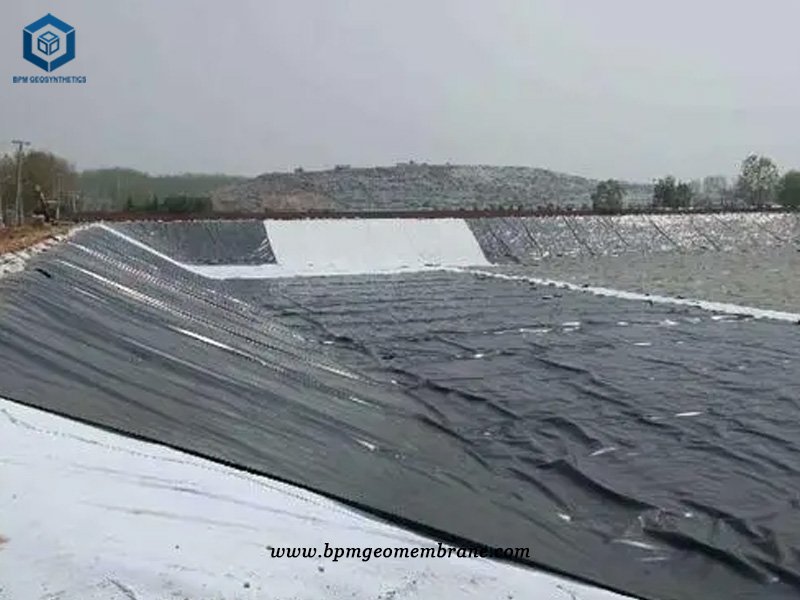2mm HDPE Sheet for Landfill Project in New Zealand
2mm HDPE sheet, also known as 2mm HDPE geomembrane liner, is one of various types of geomembrane. Its main raw material is composed of high-density polyethylene and medium-density polyethylene. The 2mm HDPE sheet is our commonly used special geomembrane for landfill and is the mainly environmentally friendly (national standard type II) geomembrane. The American standard geomembrane is one level higher than the environmentally friendly geomembrane, and the selection of raw materials is relatively strict. Some, most of the design requirements of landfill projects are based on the indicators of American standard geomembrane. Compared with ordinary geomembrane, the special geomembrane for landfill has higher tensile strength, greater length, stronger acid resistance, longer service life of geomembrane.
CASE STUDY
- Location :New Zealand
- Product(s) : 2mm HDPE Sheet
- Application : Landfill Project
Issue
Domestic waste treatment has become a very important link in the current social development model. Whether it can achieve better domestic waste treatment and classification and achieve green and environmentally friendly working conditions is also what every region needs to pay attention to. For some refractory garbage, in the process of landfilling, it is necessary to carry out more adequate preparations to avoid leakage of garbage, which will also cause certain soil environmental pollution.
Solution
The anti-seepage geomembrane liner of the landfill can ensure a more unique product environmental protection effect, and can also ensure a better product anti-seepage effect, which is also what you need to pay attention to. In recent years, under the attention of the State Environmental Protection Administration and the improvement of national environmental protection awareness, 2mm HDPE sheet treatment is adopted for environmentally friendly garbage. The role of the waste disposal site cannot be ignored by us. As early as the 1970s and 1980s, the anti-seepage membrane has been applied to the waste landfill. It will be used in waste disposal, garbage disposal and other projects Widely used impermeable membrane. The role of the anti-seepage membrane in the landfill is still relatively large, and it is the main component of the waterproof layer of the garbage disposal site. The New Zealand customer undertook the local government’s landfill project, recommended 2mm HDPE Sheet to the customer, and provided installation instructions through video. The customer is very satisfied with our products and services.
The laying method of geomembrane sheet in the landfill site
Check and measure the laying area first, and transport the film with the matching size to the corresponding position according to the measured data. Way. It should extend from the high position to the bottom, and at the same time, it should not be pulled too tightly, and a 5% margin should be reserved for local sinking and stretching. In the process of rolling and laying, it should be opened and stretched in time, and it should be in line with the slope surface and have no protruding folds. For push-laying, it should be flat and straight to avoid wrinkles and ripples. The borders should be aligned neatly, the two sheets that need to be welded should be aligned, and the overlap width should be controlled at about 15 cm.
Bonding method of landfill cover geomembrane sheet
Before bonding, remove sand, soil and other dirt on the membrane surface, and ensure that the membrane surface is clean. Using double-track hot-melt welding method:
Before hot melt welding, the upper and lower layers of impermeable membranes must be overlapped by 15 cm. The welding process is divided into adjusting pressure, setting temperature, setting speed, welding seam lap inspection, film loading machine, and starting the motor. The welds are required to be neat and beautiful, and there should be no slip welding or skipping. The temperature, speed and pressure of welding are determined by experiment and testing. The edge of the upper impermeable membrane at the welding seam should be ground into an inclination angle to improve the welding quality of the welding seam. During hot melt welding, the lap width shall not be less than 15 cm. The thickness of the weld shall not be less than 1.2 times the film thickness. On the edge of the folded portion, trim the crevice to ensure a flat overlap. When extruding welded cracks or wrinkle cut parts, the overlap should not be less than 10 cm. Cross-lap joints should be avoided, and T-shaped staggered welding should be used. The welds are required to be neat and beautiful, and there shall be no slip welding or skipping.
Anchoring method between the cover 2mm HDPE sheet and the ground: the groove anchoring method should be adopted. The anchoring groove should be separated from the construction plane by 40 cm, the groove width is 4 cm, and the groove depth is 40 cm. Pull the film into the U-shaped groove, and use sandbags or Dirt holds it in place.
Leak-proof inspection method after the covering geomembrane sheet is laid
After the landfill garbage is covered with film, it is necessary to do a good job of leak-proof inspection. If there is any problem, it can be solved in time to avoid the occurrence of leakage. In general, the inspection methods include visual inspection, inflatable inspection and damage test. Visual inspection is mainly to carefully inspect the appearance of the anti-seepage membrane laid, the quality of the weld, T-shaped welding, and substrate debris. In addition to visual inspection, vacuum detection and air pressure detection can be used if necessary. The inflation strength of inflation pressure detection is 5 minutes without air leakage. Considering that the coil is soft and easily deformed, the allowable pressure drop is 20%. When the tensile test is performed on the 2mm HDPE sheet, the standard is that when the peeling and shearing tests are performed, the weld is not torn but the mother is torn and damaged, and the welding is qualified at this time.
Benefits
- Reduce the infiltration of rainwater and other external water into the garbage dump to achieve the purpose of reducing landfill leachate;
- Control the odor emission of the landfill and the release and collection of combustible gas from the upper part of the landfill in an organized manner to achieve the purpose of pollution control and comprehensive utilization;
- Inhibit the reproduction and spread of pathogenic bacteria and their communicators, mosquitoes and flies;
- Prevent surface runoff from being polluted, avoid the spread of garbage and its direct contact with humans and animals;
- Prevent soil erosion;
- Promote the stabilization of the garbage heap as soon as possible;
- Provide a surface that can be landscaped, provide soil for the growth of vegetation, facilitate the reuse of landfill land, etc.
Specifications of 2mm HDPE Sheet for Landfill Project in New Zealand
- Total HDPE Geomembrane sheet quantity–57,000 squares meters
- Specifications – 2mm
- Each roll size is 7m*50m
About BPM
BPM has been specializing in delivering one stop geosynthetics products and solutions to worldwide customers since its foundation in 2007. BPM had provided many types of effective and state of the art geomembranes, geotextiles, geocells, geosynthetic clay liners (GCLs), drainage boards, geogrids to over 81 countries. Our main customers are from Australia, France, Sweden, UK, Hong Kong, Hungary, New Zealand, Poland, Mexico, Ecuador, Brazil, Pakistan, Bangladesh, Thailand, Vietnam, Malaysia, Indonesia, Singapore, Philippines, Sri Lanka, India, UAE, Saudi Arabia, Qatar, Kenya, Ghana, Ethiopia, Somalia, Nigeria, South Africa, Swaziland, Mongolia, etc.







没有评论:
发表评论